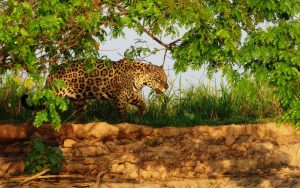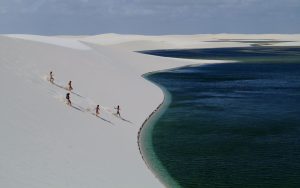Essential information for designing the perfect Pantanal safari expeditions
In a region where nature is bountiful and exuberant, flocks of birds add color to the skies while alligators rest in the sun and families of giant otters play in the rivers. The wetlands flood and dry, the Pantanal people ride through fields and trails, and South America’s biggest predator, the jaguar, lurks, waiting for the perfect moment to make an appearance. Nature finds a perfect balance.
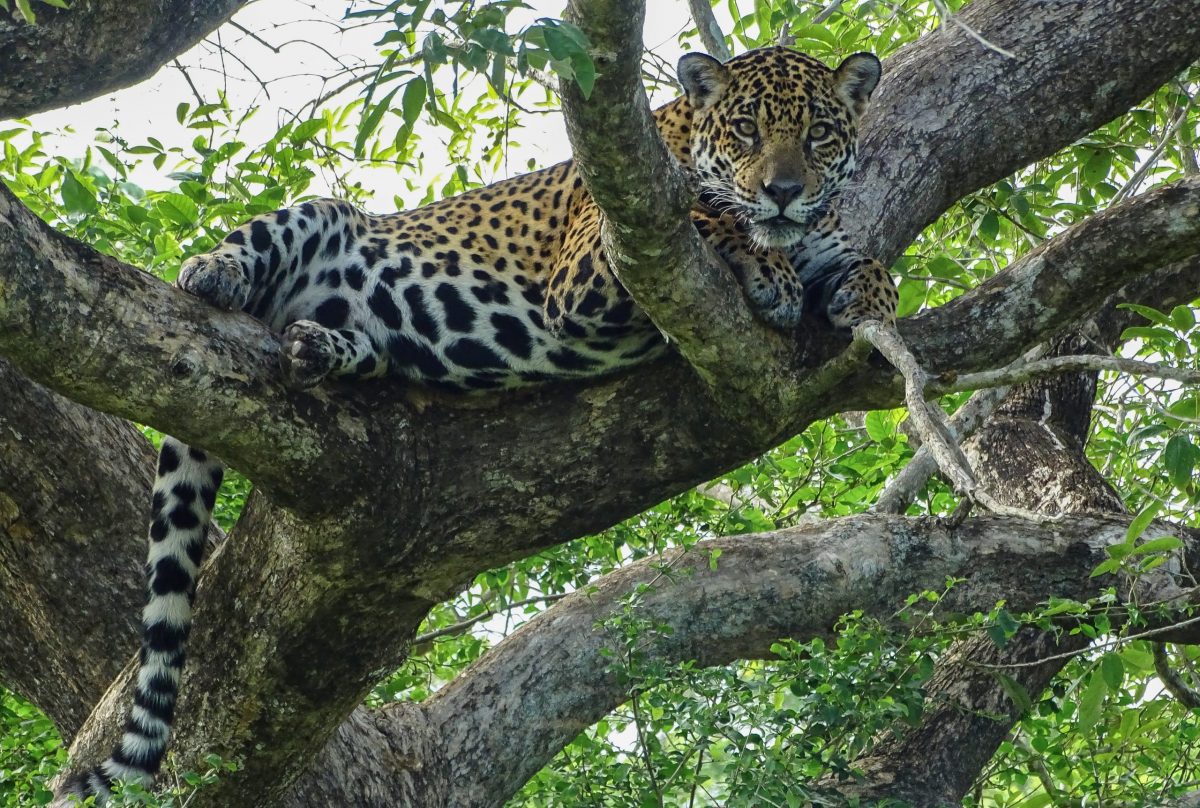
With a total area of 75.000 square miles, the Pantanal is the largest wetland in the world and one of the most biodiverse with a range of species that inspire any adventure traveler. Encompassing two states of Brazil as well as parts of Paraguay and Bolivia, the Pantanal entails a complex of biomes, including semi-arid woodland, the Amazonian rainforest, and the Brazilian savannah (Cerrado). The diverse habitats, from flooded grasslands and marshes to dry forests and rivers, encourage the perpetuation of unique biodiversity.
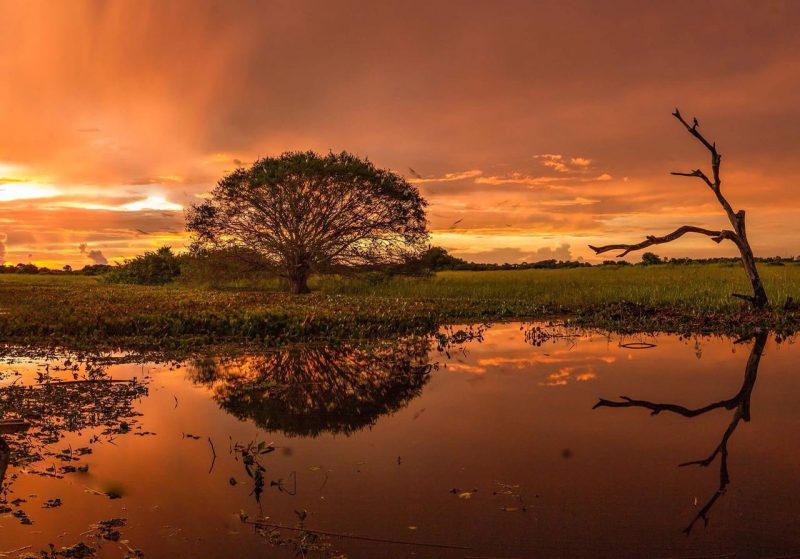
Although famous for the impressive wildlife observation opportunities, the Pantanal is also home to a rich, diverse culture, resulting from the encounter of different peoples who already lived there or settled later, including the indigenous, Paraguayans, Bolivians and the Portuguese. No trip to the Pantanal is complete without tasting some typical dishes, such as the carreteiro rice and the piranha fish stew, or sitting down for a terere (a hot infusion of yerba mate) with a pantaneiro (the name given to the residents of the Pantanal).
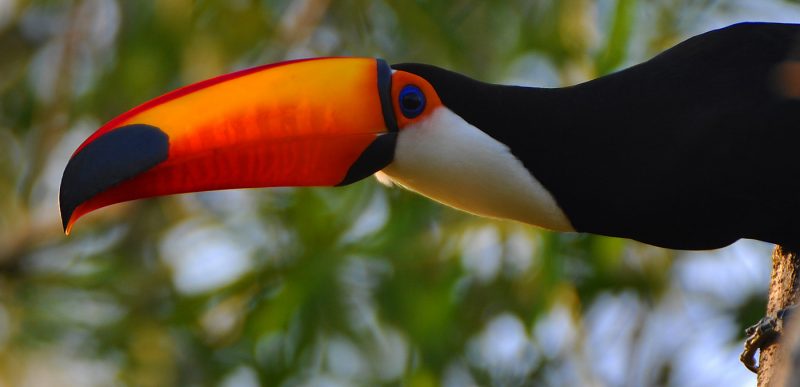
The Pantanal biodiversity
Amid its flooded grasslands, rivers and oxbow lakes, the Pantanal is home to approximately 3.500 known plant species, about 1.000 bird species, 300 mammals and 9.000 invertebrates with more species discovered frequently. Because about 80% of the wetlands are submerged during the wet season, the aquatic species and those adapted to water prevail.
The giant otter, hyacinth macaw, Chaco eagle, jaguar, ocelot, maned wolf, capybara, South American tapir, giant anteater and yacare caiman are just a few of the iconic animals that call the Pantanal home. This means that all of Brazil’s “Big Five” mammals (jaguars, giant otters, maned wolves, anteaters and tapirs) inhabit the region.
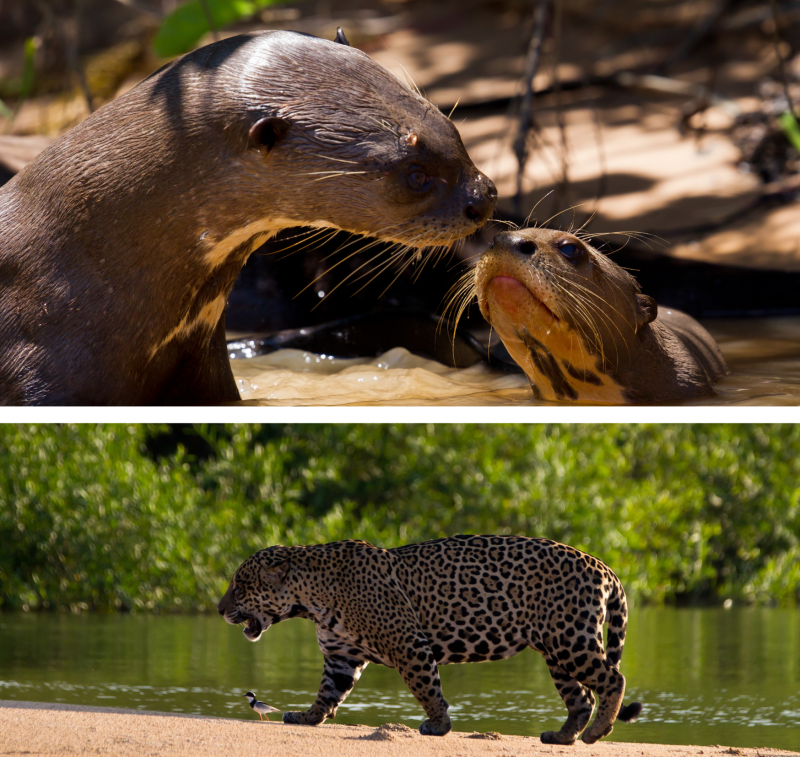
Every year, the Pantanal begins a new life cycle where the wetlands and plains flood and dry regenerating the fauna and the green territories. The water’s rhythm plays a vital role in regulating the regional water cycle, acting as a natural sponge during the rainy season and releasing water slowly during drier periods.
Exploring the different areas of the Pantanal
Exploring the Pantanal offers a captivating experience, whether embarking on wildlife safaris, birdwatching excursions, or tranquil boat trips along the winding waterways. The Pantanal spreads over the states of Mato Grosso (MT) and Mato Grosso do Sul (MS) and it has three main ports of entry through the Cuiabá (MT), Campo Grande (MS) and Corumbá (MS) airports.
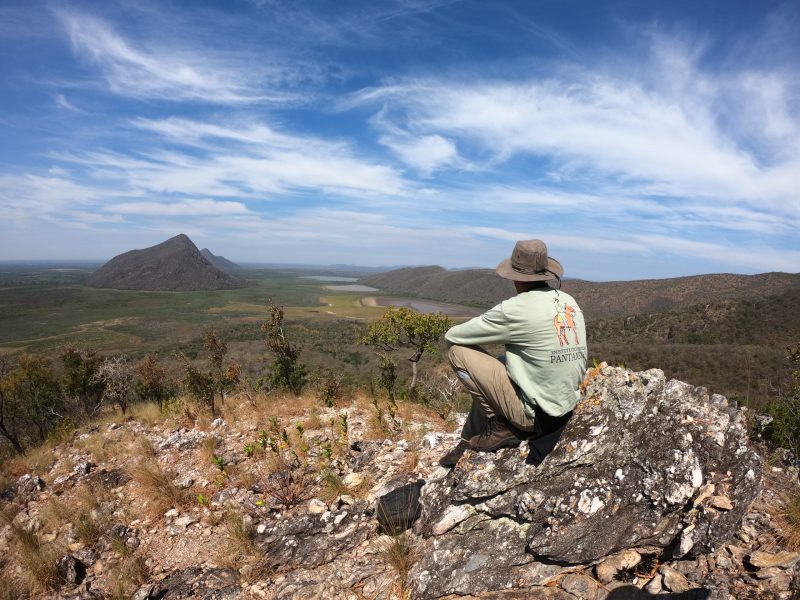
In order to have a more in-depth experience of the Pantanal, we usually recommend combining different regions in the same trip, taking the opportunity to explore the uniqueness of each area. Flights between the three cities (Cuiabá, Campo Grande and Corumbá) make this joint itinerary possible and travelers can also board panoramic private flights, that provide not only a great adventure but also a comprehensive understanding of the region’s geography.
All Pantanal areas are home to an array of wildlife and deliver experiences that are suitable for any nature, wildlife or adventure lover: from families to over 50 travelers. Regardless of the region, there’s always a memorable journey waiting for them.
When entering the Pantanal through Cuiabá (North), travelers have the opportunity to combine the journey with the Amazon’s southern region or with the surprising Chapada dos Guimarães National Park. Alternatively, Campo Grande is closer to two great ecotourism destinations: Bonito and the Iguazu Falls.
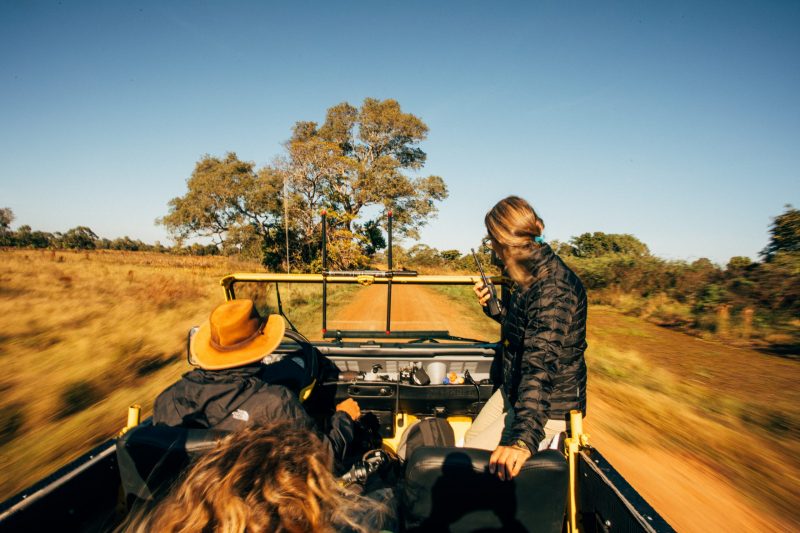
Serra do Amolar: Pantanal off the beaten path
In a magic corner of the Pantanal, in the municipality of Corumbá, close to the border with Bolivia, lies this amazing region where rugged peaks stand out among winding rivers and wetlands. Serra do Amolar is a quite peculiar region of the Pantanal still unknown even to Brazilian travelers. Unfolding different landscapes, this is a place where wildlife observation blends with a myriad of adventures: boat rides, biking, hiking, kayaking, connection with local communities, rock inscriptions, and even trekking expeditions.
Beyond its scenic allure, Serra do Amolar holds cultural and historical significance. The region is home to traditional indigenous communities, such as the Guató, Terena and Paiaguá peoples, who have inhabited the region for centuries. Their deep connection with the land is evident in the traditional communities’ ancestral knowledge that helps to preserve the natural balance of the area.
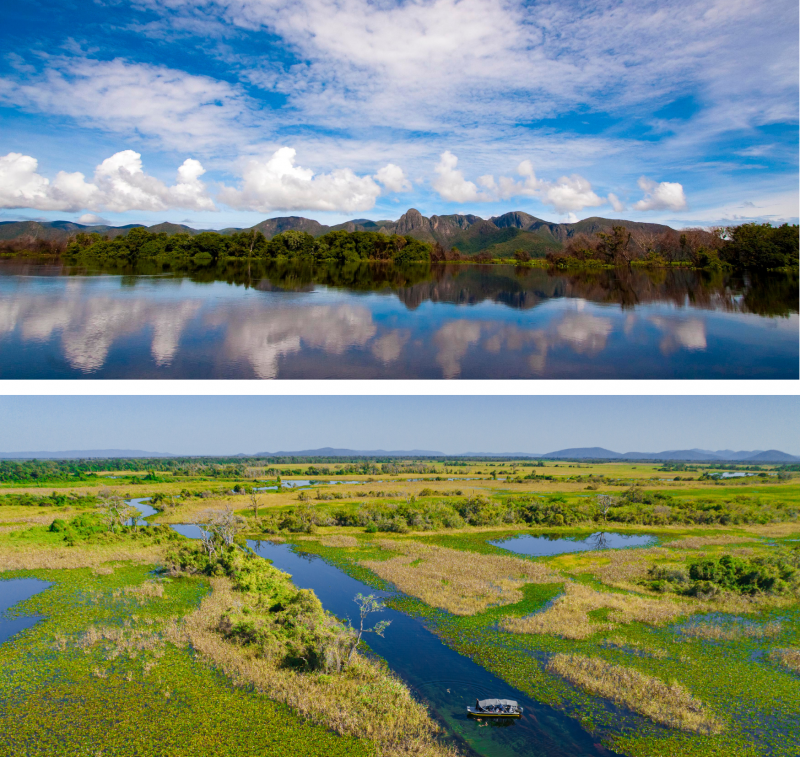
When is the best time to visit the Pantanal?
The Pantanal experiences distinct seasons that can affect the overall experience. The dry season, from April to October, is generally considered the best time to visit the Pantanal. During this period, the water levels recede, concentrating the wildlife around the remaining water sources.
Vazante (Drainage) – April to June – when the rivers start to get back to its main course. The vegetation becomes less dense, making it easier to spot animals such as jaguars, capybaras, caimans, and a wide variety of bird species. The weather is also more pleasant, with cooler temperatures and fewer mosquitoes than the summer.
Seca (Dry) – July to October – the rivers are back to its main course and it’s the best time to see wildlife. Many migratory bird species from the Northern Hemisphere arrive in the Pantanal during this time, and the concentration of birds around the waterways is truly remarkable. It can be cold, especially at night, when temperatures can plummet to zero. It is also when availability gets tricky, so make sure to consult in advance.
Cheia (Flood) – November to March – the rain is more frequent, and the rivers are flooded. This time of the year is when the Pantanal is a complete wetland, and the vegetation is really green. During this period, it’s more difficult to see mammals. But it can be an interesting season to watch aquatic animals and birds.
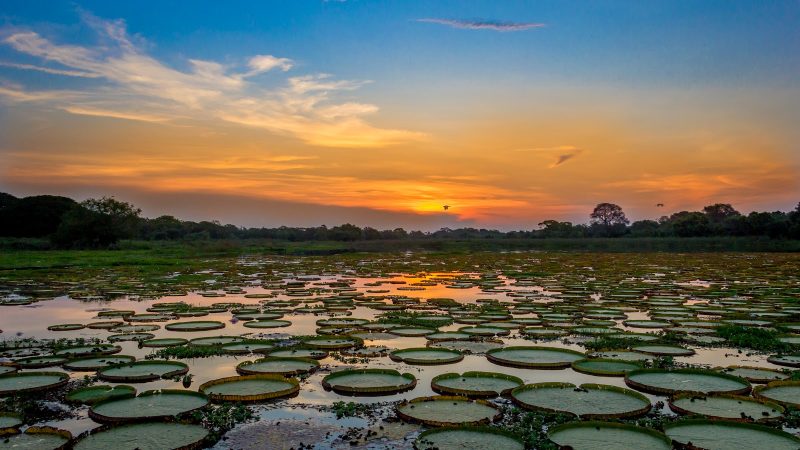
How many days are necessary to visit the Pantanal?
The number of days certainly depend on the travelers’ interests, budget, and intended activities. The Pantanal is a vast and diverse region, and there is much to explore and experience. While it’s possible to have a fulfilling visit in a few days, spending more time allows for a more immersive experience.
A minimum of four or five days can provide a glimpse of the wetland ecosystem and the opportunity to spot some of the region’s iconic wildlife. However, keep in mind that wildlife sightings can be unpredictable, and dedicating more time increases the chances of encountering a wider variety of animals.
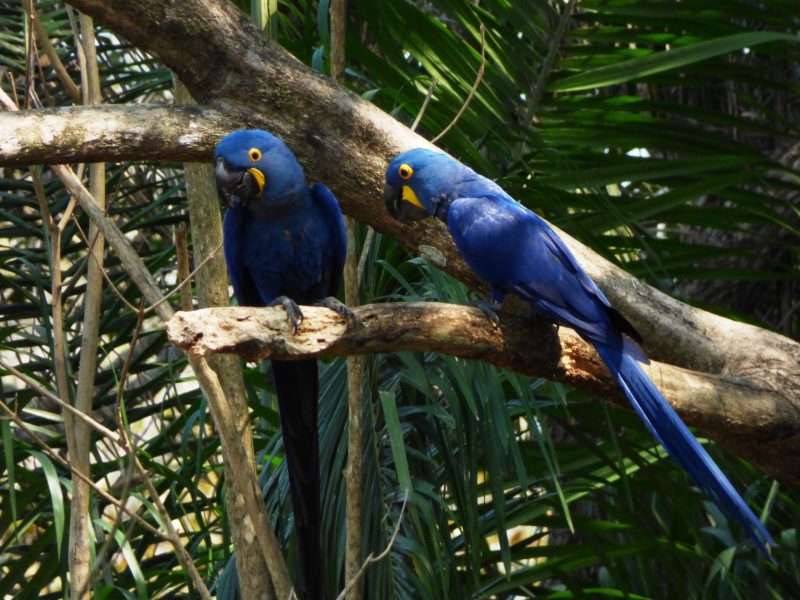
Where is the best place to observe jaguars?
The Pantanal offers several locations where visitors have a good chance of spotting jaguars, but one of the most renowned areas for jaguar sightings are in the northern part of the Pantanal, specifically along the Cuiabá River and its tributaries. This region includes areas like Porto Jofre and the Meeting of the Waters State Park, which are considered prime jaguar habitats.
Porto Jofre, located in the state of Mato Grosso, is often regarded as one of the best places in the world to observe jaguars in the wild. The concentration of jaguars along the riverbanks is notably high, offering exceptional opportunities for sightings and wildlife photography. Many lodges and tour operators in Porto Jofre specialize in jaguar safaris, providing expert guides and comfortable accommodations to enhance the chances of encountering these magnificent big cats.
The Meeting of the Waters State Park, located further upstream along the Cuiabá River, is another fantastic area for jaguar sightings. The park’s diverse landscape, characterized by rivers, floodplains, and gallery forests, provides a favorable habitat for jaguars and other wildlife species.
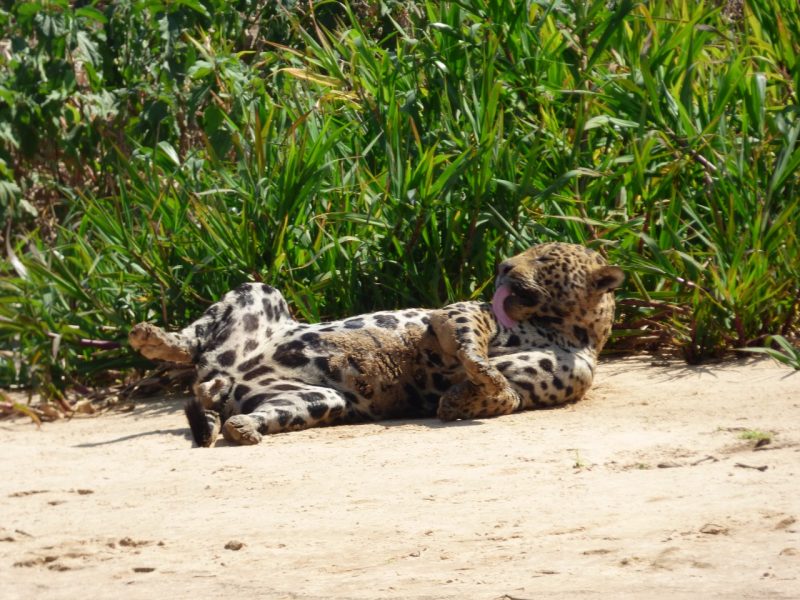
Tourism supporting the preservation of the Pantanal
The Pantanal is the most preserved biome in Brazil, still retaining 84% of its original landscape. But that doesn’t mean it doesn’t live under threats, such as deforestation, arson or climate change impacts. The region is home to many important organizations that do an essential work for the preservation of its fauna and flora.
Amongst them is the IHP – Instituto Homem Pantaneiro, which, for more than 20 years has been acting for the conservation of the biome and its local culture. The organization manages important protected areas in the South Pantanal, promotes research and awareness and intermediates dialogue between different stakeholders.
In the North Pantanal, Onçafari stands out for its scientific research, conservation and promotion of ecotourism focused on jaguars and other mammals, such as maned wolves. Their work, of more than 20 years, was extremely important to strengthen the jaguar populations in the region and adapt them, in a responsible way, to the presence of tourism.
By visiting the Pantanal responsibly and supporting conservation efforts, travelers can contribute to the long-term preservation of this extraordinary natural treasure for future generations to enjoy.
Contact us to learn more about our unique expeditions to Brazil’s Pantanal! incoming@purebrasil.net

